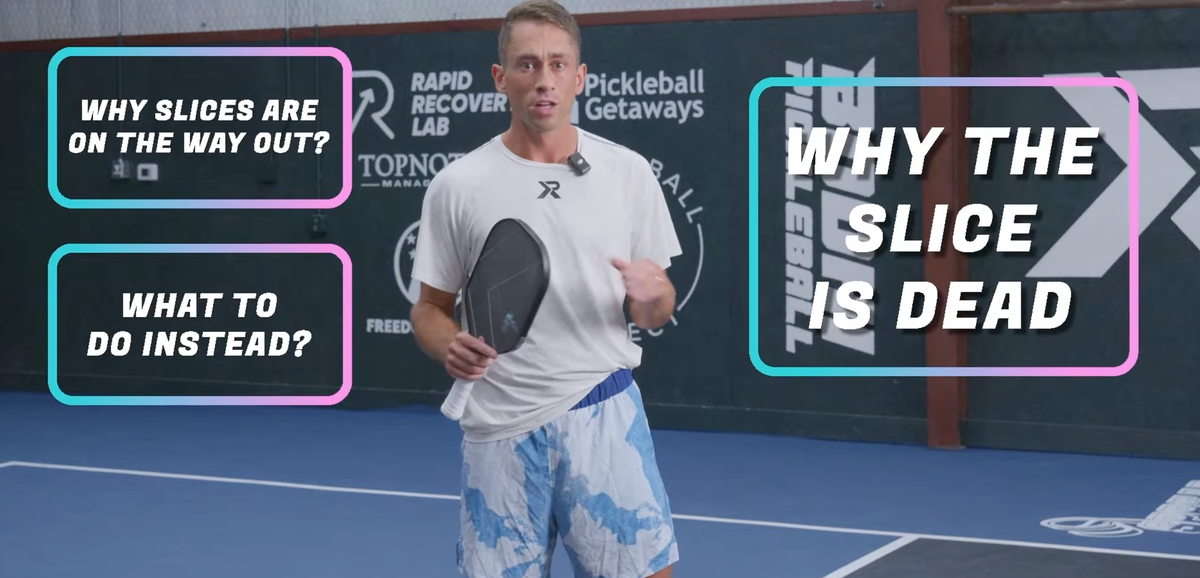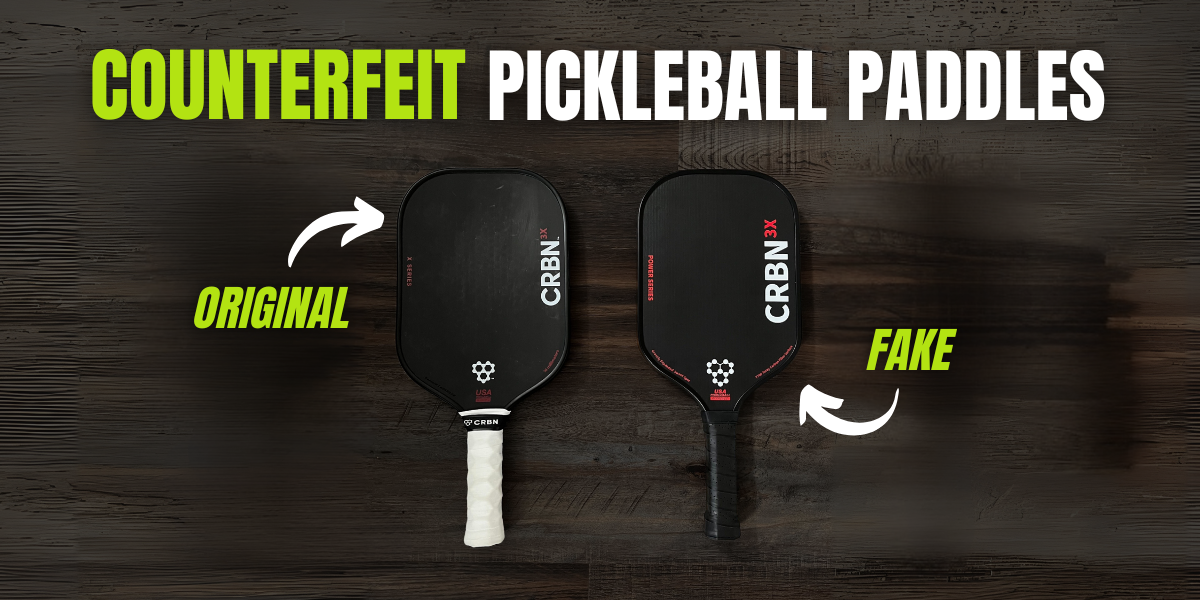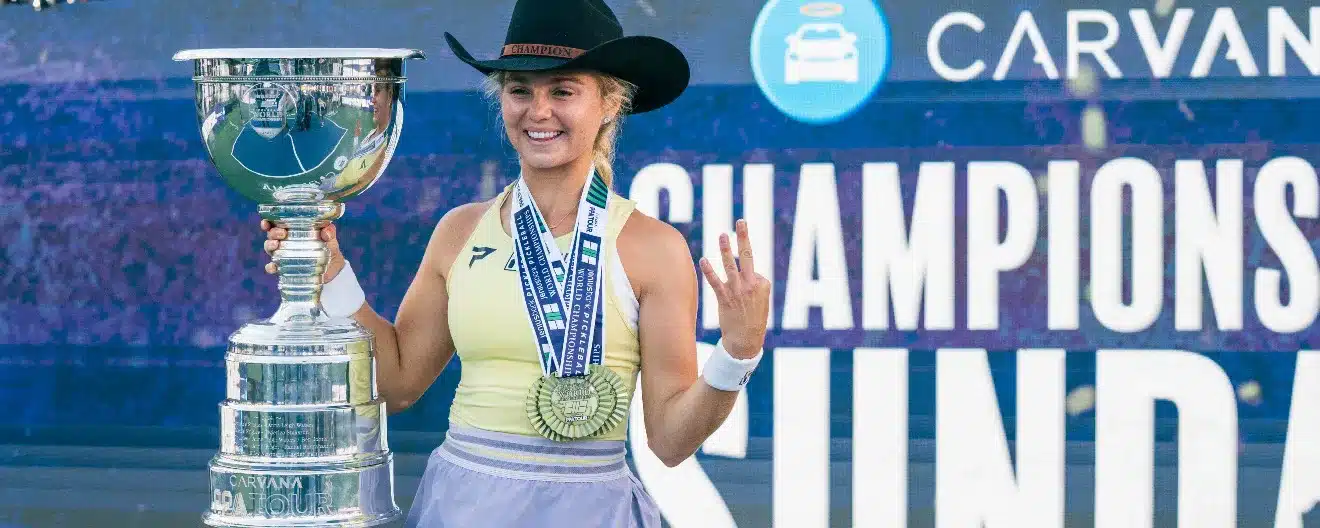Modern pickleball players are more athletic, more aggressive, and more skilled than ever before. Your third shot strategy needs to reflect that reality.
The third shot drop. It's the bread and butter of pickleball strategy, the shot that separates players who understand court positioning from those who just show up and swing.
But here's the thing: if you're still hitting the same drops you were hitting even just a year ago, you're getting left behind.
Love pickleball? Then you'll love our free newsletter. We send the latest news, tips, and highlights for free each week.
That's the core message from Jordan Briones of Briones Pickleball Academy in his latest breakdown. Here, he cuts through the noise and identifies five distinct drop variations that have become essential to competitive play.
More importantly, Briones explains not just how to hit them, but when and why you'd choose one over another.
The Evolution of a Fundamental Shot
Let's be honest: the third shot drop has always been important. It's the response to a deep return of serve, the moment where you either neutralize your opponent's advantage or hand them the point on a silver platter.
But the game has evolved. Players are faster, more athletic, and more aggressive than they were even a couple years ago. That means the old playbook doesn't cut it anymore.
Why Professional Pickleball Players Abandoned the Slice Shot in 2025
The slice didn’t die because it was a bad shot. It’s gone extinct because the game has evolved to favor the fast pace facilitated by topspin.
 The Dink PickleballThe Dink Media Team
The Dink PickleballThe Dink Media Team

Briones identifies a critical shift in how modern pickleball is played.
The returner is charging the net harder. The kitchen line is becoming a battleground rather than a safe zone. And your drop shot needs to account for these new realities.
Here are five different drop variations, each with specific applications and technical requirements.
1. The Lift or Push Drop: Your Foundation
The first drop in Briones' arsenal is the lift or push drop, and it's probably the most fundamental. This is your go-to when the return sits shorter and shallower in the court, or when you're reaching forward for a low ball. Think of it as the safety option, the shot that gets the job done without requiring perfect conditions.
The technique here is straightforward but demands precision.
- Your wrist needs to be locked and stable, not flipping or manipulating the paddle.
- Lead with your hand, not the top of the paddle.
- Keep your feet stable at contact so you can lift the ball up and over at a consistent rate.
It's not flashy, but consistency is the whole point.
2. The Topspin Drop: Pressure and Margin
The topspin drop puts real pressure on your opponent because it gives you margin over the net while the spin causes the ball to land downward at your opponent's feet.
You're looking for returns that bounce up a little higher, since you need to get under the ball with your paddle head.
Here's what you need to know:
- Briones recommends an eastern grip or something close to it.
- Drop your paddle head down below the ball, then swing upward while brushing the back of the ball to generate that topspin motion.
- The finish can vary, but the goal remains the same: brush upward to create spin.
Avoid These 3 Deadly Mistakes to Master Aggressive Dinking
The aggressive dink isn’t about overpowering your opponent. It’s about creating pressure through placement, using deception to keep them guessing, and understanding when to attack versus when to reset
 The Dink PickleballAlex E. Weaver
The Dink PickleballAlex E. Weaver

3. The Slice Drop: Control Through Float
The slice drop is your answer when you're dealing with a lower ball or when you're extended on the court. Here's where footwork becomes absolutely critical. You need a closed stance, feet in line with your target, so your shoulders can turn and you can get underneath the ball properly.
- Bend your knees to get that forward momentum.
- Your wrist should be laid back and locked, creating roughly a 45-degree angle in the paddle face.
- This positioning lets you get underneath the ball and hit a nice slice that dips down in the court.
One important caveat: the slice tends to float and travel more than other drops, so you generally want to hit this crosscourt rather than straight up the line.
4. The Drip or Hybrid: The Aggressive Option
This is where modern pickleball gets spicy. The drip, sometimes called the hybrid, sits somewhere between a drive and a topspin drop.
It's the most aggressive third shot drop option, and it's particularly valuable when you can catch your returner on their way up to the kitchen line.
The key is hitting at their feet and getting there quickly. You're looking to create errors or shake-and-bake opportunities.
- Prep early, take your paddle back, then hit at 60 to 70 percent of your full drive speed.
- That controlled pace is what makes the ball dip down.
- You're brushing up on the ball while still driving through it, similar to a regular drive but with significantly less velocity.
Target the returner who's running in, since they're the one with their feet back in the court.
Players Weigh In: What’s the Most Overrated Thing in Pickleball Right Now?
According to a trending Reddit thread, it’s anything from high tournament fees to being subjected to some unsolicited on-court advice.
 The Dink PickleballAlex E. Weaver
The Dink PickleballAlex E. Weaver

5. The Shovel Drop: Efficiency Meets Consistency
The final piece of the puzzle is the shovel drop, and Briones calls it one of his personal favorites. Why? Because it's efficient, consistent, and it gets your team to the kitchen line, which is ultimately the whole point of the third shot.
You'll use this when you hit a third shot drive and get blocked back near your feet, or when you're facing a penetrating return that's deeper in the court.
- The technique involves hinging your wrist to get that paddle angle facing upward, creating loft in your shot.
- Your back swing shouldn't be huge, just enough to get behind the ball.
- Then you're lifting forward and through with your shoulder as the primary motion, not your wrist.
Here's the thing about the shovel drop: because you're essentially slicing the ball, it tends to sit up a little when it bounces, tempting your opponent to attack. So make sure your hands are ready to reset as you move through transition.
Fake Pickleball Paddles Are Flooding the Market—and Hurting the Sport’s Future
Inside the pickleball paddle black market that’s confusing consumers, costing brands, and undermining the sport’s ability to innovate
 The Dink PickleballAlex E. Weaver
The Dink PickleballAlex E. Weaver

Heads up: hundreds of thousands of pickleballers read our free newsletter. Subscribe here for cutting edge strategy, insider news, pro analysis, the latest product innovations and more.
Anuncie Aqui / Advertise Here
Sua marca para o mundo Pickleball! / Your brand for the Pickleball world!

 English
English  Spanish
Spanish  Portuguese
Portuguese  German
German  Italian
Italian  Japanese
Japanese  French
French  Polish
Polish  Russian
Russian  Netherlands
Netherlands  Hungarian
Hungarian  Turkish
Turkish  Videos
Videos 








 English (US) ·
English (US) ·  Portuguese (BR) ·
Portuguese (BR) ·